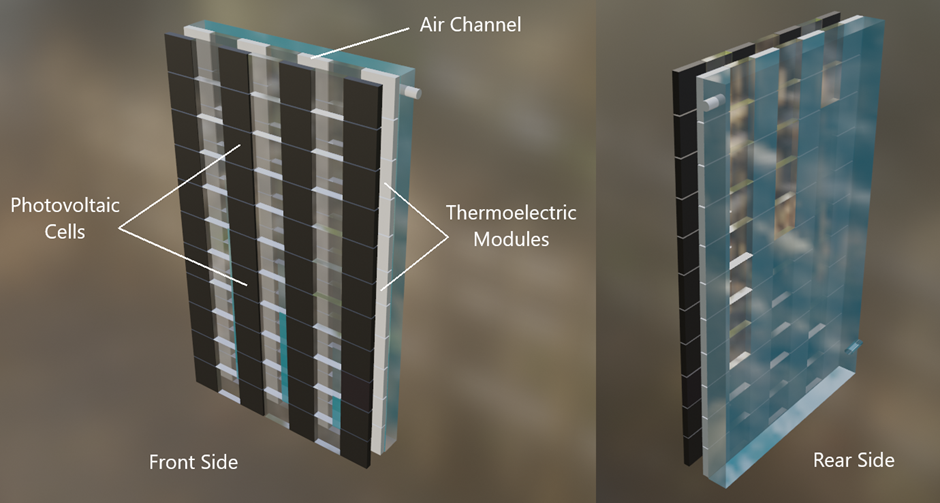An Australian-Indian research group has looked at how thermoelectric modules (TEMs) and PV could be combined to provide heating, ventilation, and air conditioning (HVAC) in buildings.
Thermoelectric modules are widely used for the electronic cooling of devices such as personal computer processors, portable food, and beverage storage systems.
“Thermoelectric cooling can be cheaper to operate than many conventional HVAC type systems for small area cooling applications especially if we are coupling it with photovoltaic electricity which is cheaper than conventional electricity for many regions of the world,” researcher Shyam Singh Chandel told pv magazine.
The researchers said that conventional TEMs have only rarely been used in actual buildings due to their low coefficient of performance (COP). The combination with PV, however, could bring them closer to commercial viability in the construction sector, especially if they are used in low-energy-demand buildings, which still rely on conventional air conditioning.
“In the current state of the art, a prototype thermoelectric cooling system may not be cheaper as far as upfront cost is concerned but will provide many advantages like zero or low maintenance, easy repair, zero-noise operation, modularity, precision cooling and is certainly more environmentally friendly than chlorofluorocarbons-based cooling systems which affect the environment due to fugitive emissions, especially during manufacturing and disposal of such systems,” said Chandel.
The scientists developed a novel design for a TEM system powered by building-integrated photovoltaics (BIPV). The system uses air as the thermal fluid for rooftop PV and a primary TEM wall for room air conditioning.
“The TEM wall system is integrated with thermal energy storage material wall and has the primary function to heat or cool the adjacent room, store excess thermal energy and can also be optimized as a support system to enhance the efficiency of any already installed conventional AC system,” they said. “In the rooftop system, the airflow is sucked by natural convection from the bottom of the air-duct below the PV modules and takes the heat away from the integrated TEM as well as the PV modules.”
With semi-transparent solar modules, the system could be configured as a transparent thermoelectric module wall (TTEM-wall) or semi-transparent thermoelectric module wall (STEM-wall), depending upon the transmittance of the thermal mass. Chandel said the main challenge for the system is its lower efficiency compared to conventional vapor compression refrigeration (VCR) systems. Thermoelectric systems have a coefficient of performance (COP) typically in the range of 0.5 to 3.0, whereas it is 1.2 to 6.0 for VCR systems.
“However, if we look at building cooling requirements and thermal comfort temperature range, there is not always a need for high power cooling and, in such cases, the thermoelectric system can perform adequately even with lower cooling power and for the desired temperature change,” Chandel explained. “Coupling such systems with cheap PV electricity, and optimized design with the help of other technologies like radiant sky cooling panels, phase change materials (PCM) and heat pipes can also even out the field for feasible application of such systems in building applications. Furthermore, new research breakthrough in materials for thermoelectric modules is needed which can further make the technology really competitive with conventional HVAC systems.”
The scientists presented their findings in “Prospects of sustainable photovoltaic powered thermoelectric cooling in zero energy buildings: A review,” which was recently published in the International Journal of Energy Research. The research group includes academics from Shoolini University in India and the University of New South Wales in Australia.
“The novelty of the study is that it presents an updated comprehensive review of the past studies, current state of the art and future development research outcome and analysis in view of global climate change and need for sustainable zero-energy-building (ZEB) technologies,” they said.
This content is protected by copyright and may not be reused. If you want to cooperate with us and would like to reuse some of our content, please contact: editors@pv-magazine.com.




1 comment
By submitting this form you agree to pv magazine using your data for the purposes of publishing your comment.
Your personal data will only be disclosed or otherwise transmitted to third parties for the purposes of spam filtering or if this is necessary for technical maintenance of the website. Any other transfer to third parties will not take place unless this is justified on the basis of applicable data protection regulations or if pv magazine is legally obliged to do so.
You may revoke this consent at any time with effect for the future, in which case your personal data will be deleted immediately. Otherwise, your data will be deleted if pv magazine has processed your request or the purpose of data storage is fulfilled.
Further information on data privacy can be found in our Data Protection Policy.